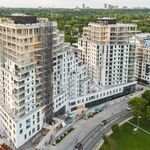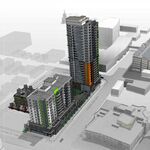drum118
Superstar
This load factor is proving what I and other stated back in 2005 and since then, unless TTC is doing a 1:1 replacement of existing fleet numbers, you are only moving from one cattle car system to another and not dealing with the pent-up demand that exist today, more stroller and accessibility riders, but also new rides as the city grows.
In the last 12 years, how much growth has taken place not only along King, but within a 5 minute walk of it???. With better service being offer today. it is being hamper by the increase of riders either coming back to the system or are new ones. At this time of year, people will use transit than walk in the cold and snowy sidewalks. TTC is short cars and it will remain that way until 2025 after TTC place another order for more cars that should not only been order on day one as 1:1, but to deal with expansion and growth. By rights come 2020-2025, there needs to be a car every minute in the downtown area and not going to happen until more cars show up as well a true Transit Mall is built for that area and the expansion of the pilot project for all of King.
Who listen to a radio these days considering I haven't in the last 10 years even at home. Very rarely I listen to one in a car for music only and if so, its very short doing hwy driving.
In the last 12 years, how much growth has taken place not only along King, but within a 5 minute walk of it???. With better service being offer today. it is being hamper by the increase of riders either coming back to the system or are new ones. At this time of year, people will use transit than walk in the cold and snowy sidewalks. TTC is short cars and it will remain that way until 2025 after TTC place another order for more cars that should not only been order on day one as 1:1, but to deal with expansion and growth. By rights come 2020-2025, there needs to be a car every minute in the downtown area and not going to happen until more cars show up as well a true Transit Mall is built for that area and the expansion of the pilot project for all of King.
Who listen to a radio these days considering I haven't in the last 10 years even at home. Very rarely I listen to one in a car for music only and if so, its very short doing hwy driving.





